Have you spotted black-and-red bugs clustering on your exterior walls and asked, “are boxelder bugs harmful?” In the DMV region these invasions can be alarming. As a registered technician with four years in the field and a third-generation Schulz family legacy, I’ve removed thousands of bugs.
What Are Boxelder Bugs? Box Elder Bug Identification Basics
The boxelder bug is a native insect that feeds on seeds of boxelder and maple trees. Adult bugs measure about one-half inch at maturity. You’ll often see them near boxelder trees on sunny walls.
Boxelder Bugs Look: Red and Black Coloration
Boxelder bugs look striking with a red and black body and black wings. Their bright red eyes and orange stripes on the pronotum make them easy to spot.
Box Elder Bug vs. Stink Bug: Similar Insect Comparison
While the stink bug is a similar insect with a broad shield shape, the box elder bug is slender and red-striped. Crushed stink bugs emit a smell, but boxelder bugs won’t give you that stink.
Boxelder Bug Life Cycle: From Nymph to Adult Bug
These bugs follow a simple life cycle: egg, nymph, and adult. You’ll see boxelder nymphs in spring before they mature into winged adults.
Understanding Boxelder Nymphs
Boxelder nymphs are bright red and wingless. Their piercing mouth parts let them sip sap from tender seed pods and young growth on box elder trees.
Adult Stage: Inch-Long Bugs and Black Wings
At the adult stage, boxelder bugs have fully formed wings and bold red stripes on their backs. You’ll spot them inch long and moving slowly under sunny eaves.
Where Do Boxelder Bugs Come From? Seasonal Behavior of Box Elder Bugs
In fall, boxelder bugs come to warm, sunny exterior walls and congregate by the thousands. Each boxelder bug finds its way through tiny cracks and crevices to shelter, then they overwinter in a crevice around siding and emerge in trees in the spring.
Assessing Are Boxelder Bugs Harmful: Separating Risk from Nuisance
Homeowners worry about bites, stings, or structure damage, but boxelder bugs are completely harmless to structures and people. They may stain fabrics or cause minor damage to plants. They are not known to cause any real harm, even if they wander inside homes.
Key Facts About Boxelder Bugs
- They do not bite or sting humans or pets
- They cannot damage your home’s structure
- They do not reproduce indoors
- Their main nuisance is staining fabrics when crushed
Are Boxelder Bugs Harmful to Your Home Structure?
These bugs are nuisance pests that do not chew wood or bore holes, so they won’t harm your foundation or walls. The biggest problem is squashed bugs can stain fabrics with their orange fluid.
Are Boxelder Bugs Harmful to People and Pets?
Boxelder bugs poisonous myths don’t hold up—these pests don’t bite humans or pets. If a dog eats one, it likely won’t get sick.
Do Boxelder Bugs Bite or Sting Humans?
Boxelder bugs bite plants but not people. These insects have piercing mouth parts but don’t attack or sting humans—you can read more about those in Do Termites Bite Humans?.
Boxelder Bugs and Plant Damage: Do They Harm Trees or Plants?
Their piercing mouth parts let them feed on seeds and stems of a box elder tree. You may see yellow spots, but serious damage to plants is rare.
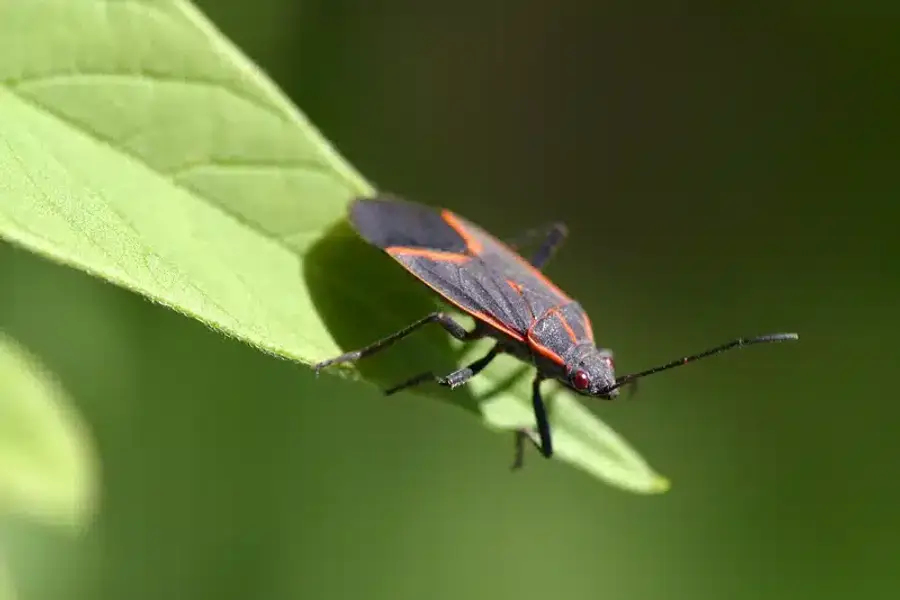
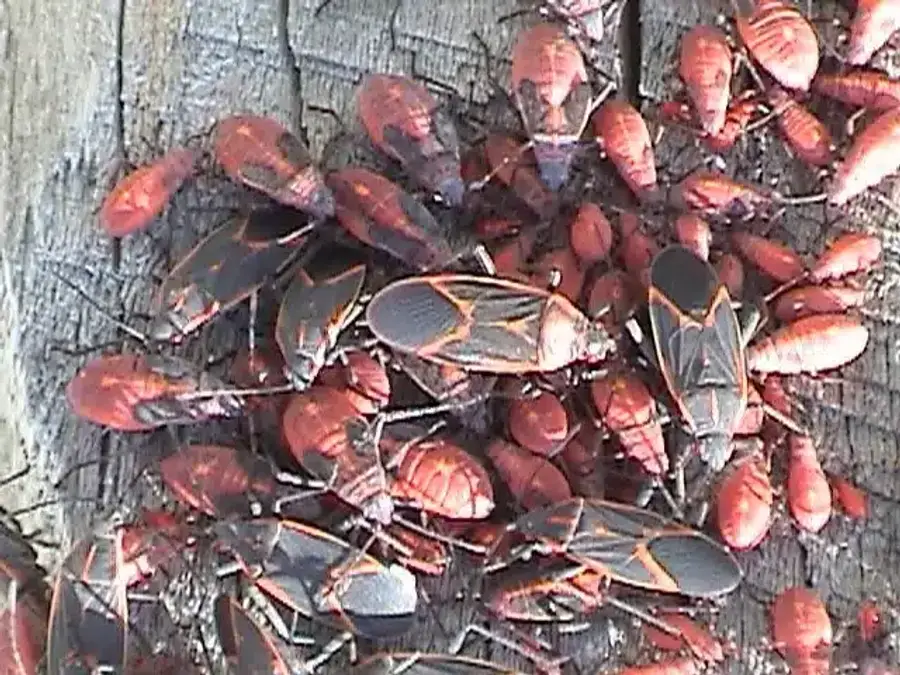
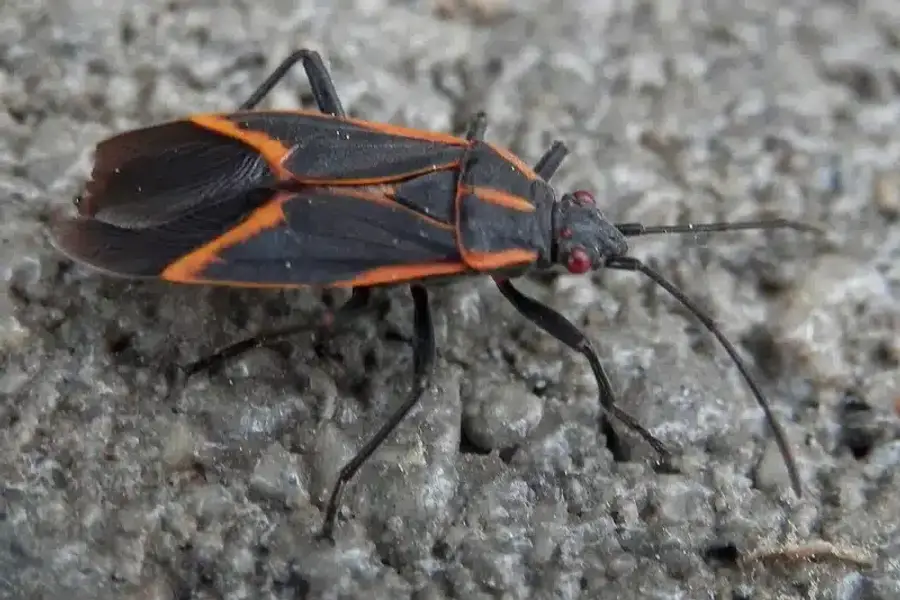
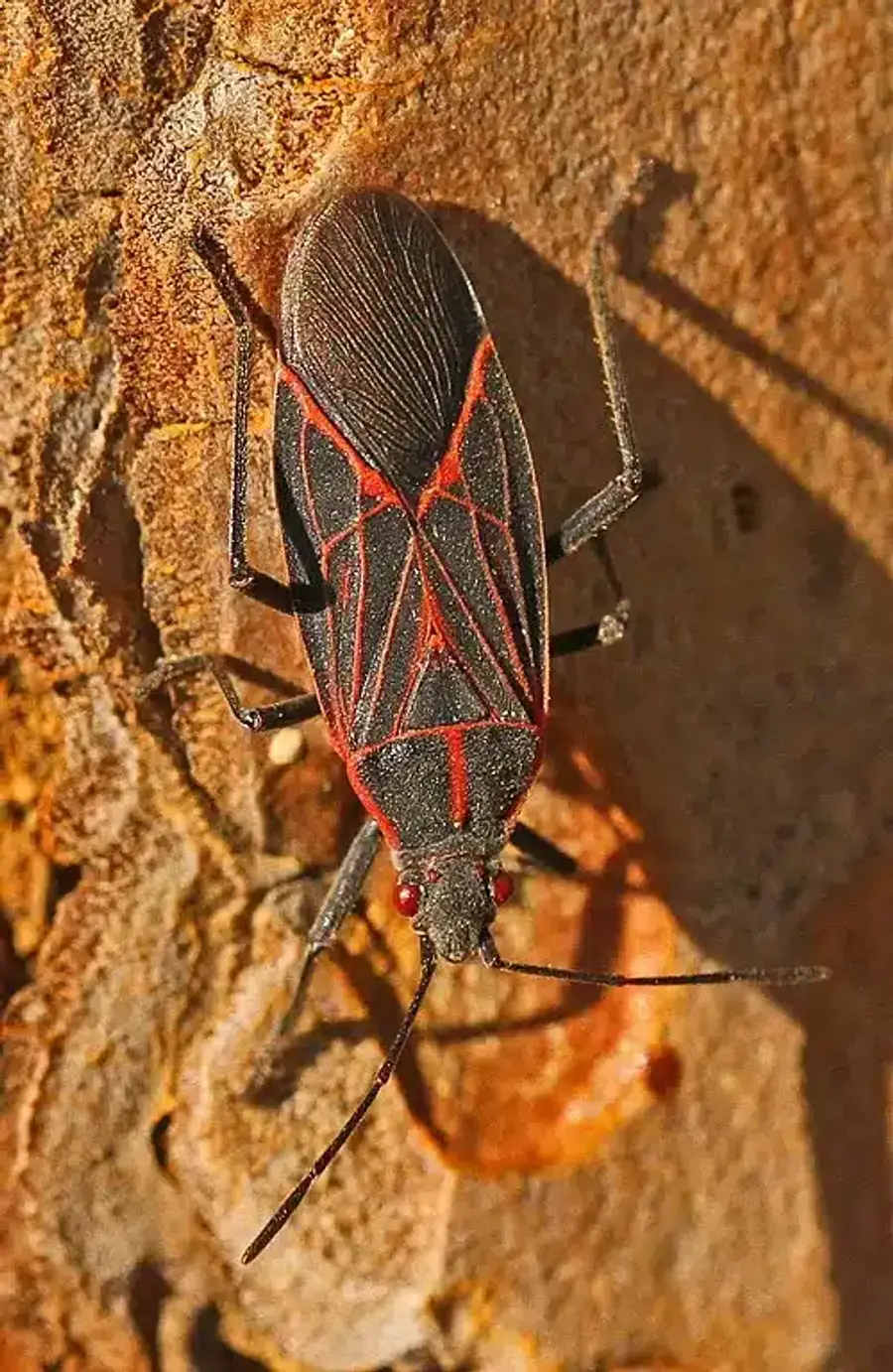
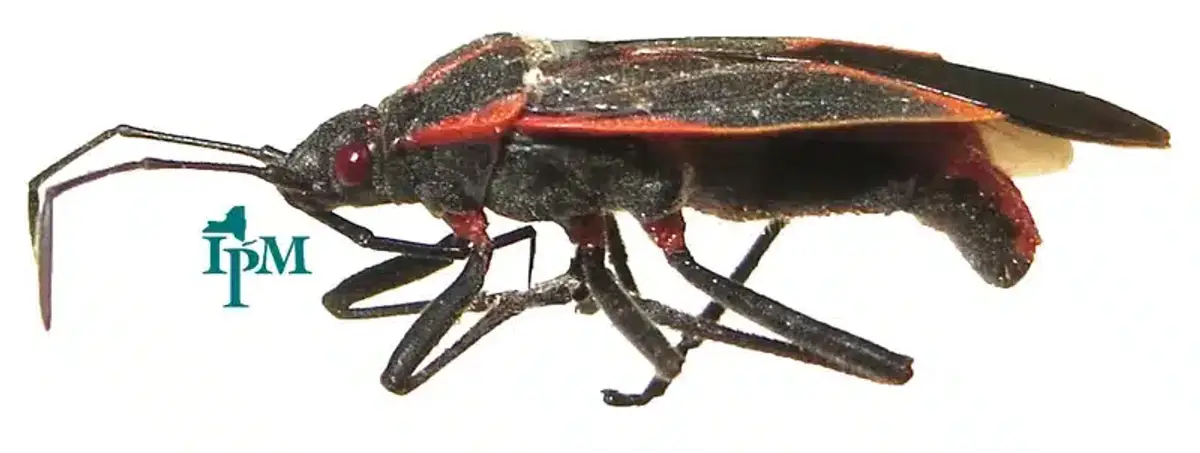
Sometimes, they nibble on fruit trees late in the season, leaving small dimples. They don’t feed on house plants or ruin your décor.
Boxelder Bugs vs. Other Nuisance Pests: Milkweed Bugs and Clover Mites
Fall means more than boxelder bugs—they share the season with milkweed bugs and tiny clover mites. Like boxelder bugs, clover mites often slip in through small gaps. Clover mites prefer low vegetation, while milkweed bugs feed on seed pods of milkweed.
Boxelders and Maple Trees: Host Plant Preference
Female box elder trees produce seed pods, and this attracts boxelder bugs as a prime food source. Male box elder trees don’t bear seeds and attract far fewer boxelders.
How Boxelder Bugs Congregate in Large Numbers
By late summer, boxelder bugs congregate in large clusters on sunlit walls or tree trunk. They look for warmth before entering dormancy in the cold months. They are attracted to light, gathering around porch lamps at night.
How to Get Rid of Boxelder Bugs: Initial Physical Removal Methods
For most homeowners, non-chemical methods work best. You can get rid of boxelder bugs by vacuuming them up or spraying them with a non-toxic soap solution.
Consider Vacuuming and the Vacuum Bag Technique
Consider vacuuming bugs crawling around windows or door frames using a hose attachment and a stocking filter. Remove and seal the vacuum bag outdoors to stop any survivors trying to get inside.
Using Water Spray and Soapy Water
A strong jet of water can knock bugs off outside walls or trees. For clusters near your house, spray them with a bucket of hot soapy water to kill on contact.
Professional Pest Control Options for Box Elder Bugs
If boxelder bugs invade inside your home or an infestation is too big, hiring a licensed technician makes sense. For perimeter pest control, pros can apply EPA approved pesticide barrier sprays that last weeks.
Pest Control Perimeter Sprays and Pesticide Use
Perimeter sprays often use pyrethroid pesticides like bifenthrin or deltamethrin. All products are EPA approved and vetted by our internal research team.
When to Call a Pest Control Exterminator
Call a pest control exterminator if bugs are nesting in wall voids or attic spaces. They have gear to apply dust or treatments in hiding places you can’t reach.
Integrated Pest Management: Long-Term Prevention of Boxelder Bug Infestations
Integrated Pest Management means using exclusion, habitat modification, and monitoring. Observing the activity of the bugs helps you know when and where to act and limits invasions without heavy chemical use. For more ideas, see our Termite Prevention & Control.
Home Maintenance: Caulk, Seal, and Keep Bugs from Entering Your House
Seal cracks and crevices around your house’s windows and door frames with silicone caulk. Add weatherstripping and fine mesh screens to block bugs from entering your house.
Essential Exclusion Steps
- Seal cracks around windows, doors, and utility penetrations with silicone caulk
- Install or repair fine mesh screens on windows and vents
- Add weatherstripping to doors and garage entries
- Check and seal gaps around pipes, wires, and cables entering the home
Seasonal Tips: When and Where Boxelder Bugs Overwinter
Boxelder bugs hibernate in a crevice under loose bark or inside wall voids. During warm spells, they may stir and wander indoors again.
The Better Way: A Family-Owned Approach to Box Elder Bug Pest Control
At Better Termite & Pest Control, our licensed technicians lean on a third-generation legacy and research-backed methods. We use EPA approved products reviewed by our internal research team and offer unlimited callbacks.
Conclusion: Are Boxelder Bugs Harmful, and What Steps to Take
Boxelder bugs are a nuisance, not a real threat to buildings or people. Seal entry points, vacuum or spray them off, and call us if you need a hand.

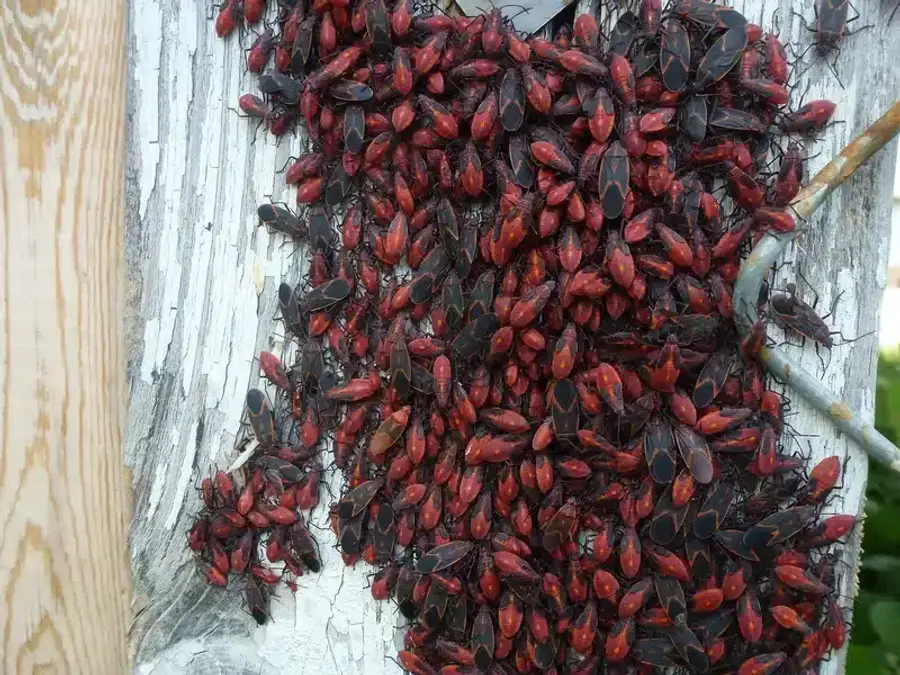

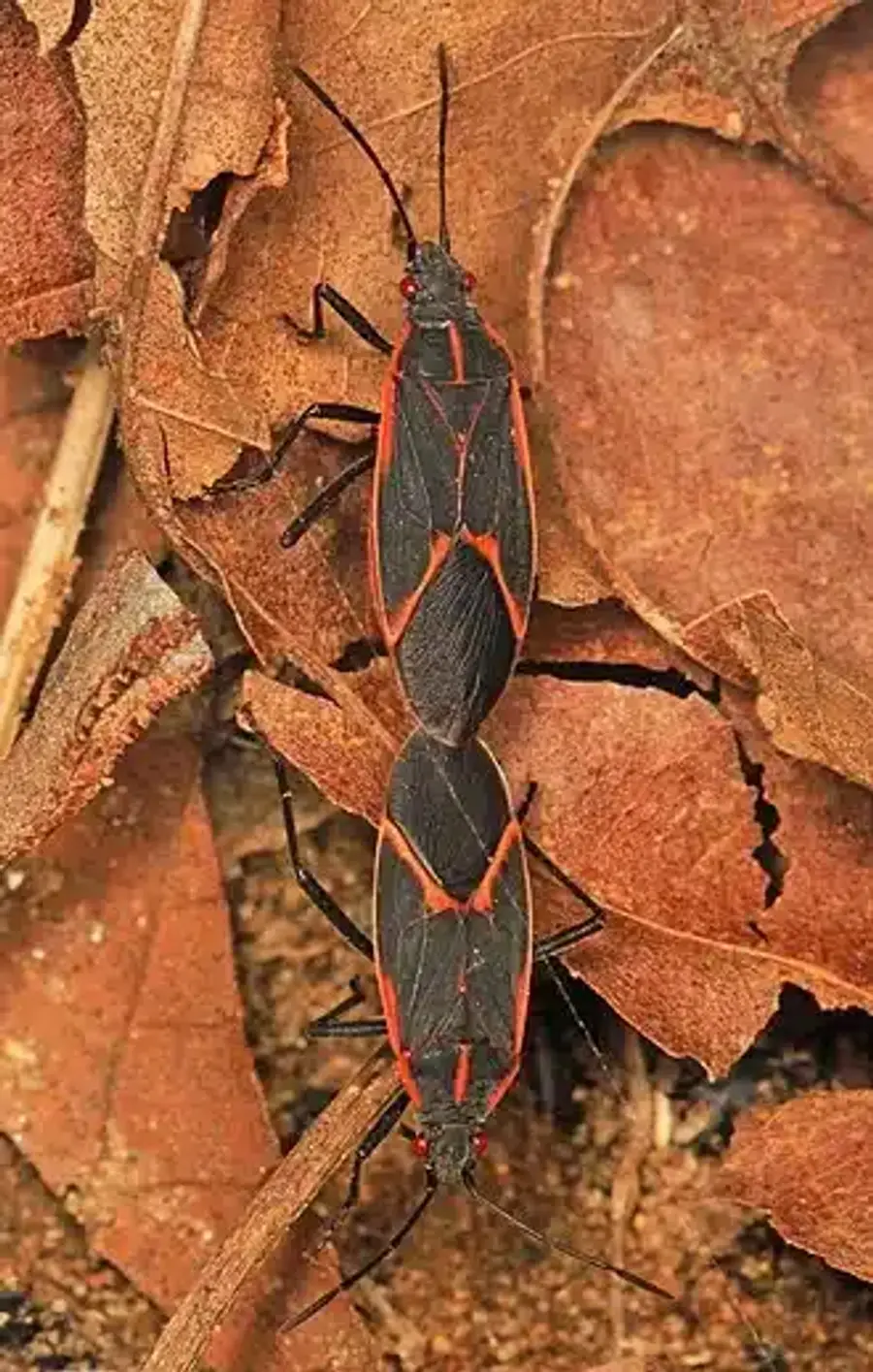
Frequently Asked Questions
Should I Be Concerned About Boxelder Bugs?
+
Boxelder bugs are nuisance pests but not dangerous. They don't bite, and they don't eat anything inside your home.
Why Do People Hate Boxelder Bugs?
+
They swarm in large numbers, can stain fabrics when squashed, and emit a foul odor. Their random crawling on walls feels creepy and messy.
Are Boxelder Bugs Toxic to Dogs?
+
No, boxelder bugs are not toxic to dogs. A few bites may upset a stomach, but the bugs won't poison pets.
How Do I Get Rid of Boxelder Bugs?
+
Vacuum bugs indoors or spray them off outdoors with soapy water. Then seal cracks and install screens to block future entries.
Do Boxelder Bugs Bite Humans?
+
No, boxelder bugs do not bite humans. Their mouth parts are made for sipping plant sap, not for biting people.
With five years of hands-on experience in the pest control industry, George Schulz is a registered technician with the Virginia Pest Management Association and a proud third-generation professional in a family business that's been protecting homes for over 57 years. He manages and trains a team of service pros while also leading internal research efforts—recently spearheading a deep-dive review of thousands of documents on pest control materials to hand-pick the most kid and pet friendly, most effective solutions tailored specifically for homes in the DC metro area.
